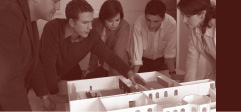Develop a set of model smart growth codes for cities and counties
Action
Local development regulations establish land-use patterns in a community. In many communities, local codes prevent the development of walkable, mixed-use neighborhoods. These codes include zoning regulations, subdivision ordinances, parking standards and street guidelines. The State can help local governments increase the number of walkable, mixed-use neighborhoods by developing and sharing a set of model smart growth development codes.
Process
There are many existing smart growth codes that planning agencies can adapt for community use. The American Planning Association has drafted a set of model smart growth codes. The Local Government Commission has compiled examples of more than 40 smart growth codes from across the U.S., highlighted in its publication, Smart Growth Zoning Codes: A Resource Guide.
Model codes include the elements that make up standard zoning ordinances, including the identification of land uses permitted in each district, applicable design standards, requirements and procedures for obtaining permits, and procedures for variances and non-conforming situations. It is important to ensure that the state’s zoning enabling legislation supports the model code. The zoning enabling legislation may also need to be updated so that localities can use the model smart growth code.
In addition to developing the model code, the state planning department or agency should publicize the code and train local governments in the use of the code. It may also be necessary to develop supplementary materials, such as application forms and checklists.
Example
- Wisconsin’s Traditional Neighborhood Design Model Code
In 1999, Wisconsin passed the Smart Growth for Wisconsin Act, which required that communities with populations above 12,500 adopt Traditional Neighborhood Development, a planning model that encompasses elements of smart growth. In response to this legislation, the University of Wisconsin Extension Service developed a model ordinance that localities could use as a template to customize and tailor own smart growth codes.
— Wisconsin’s Traditional Neighborhood Design Model Code


